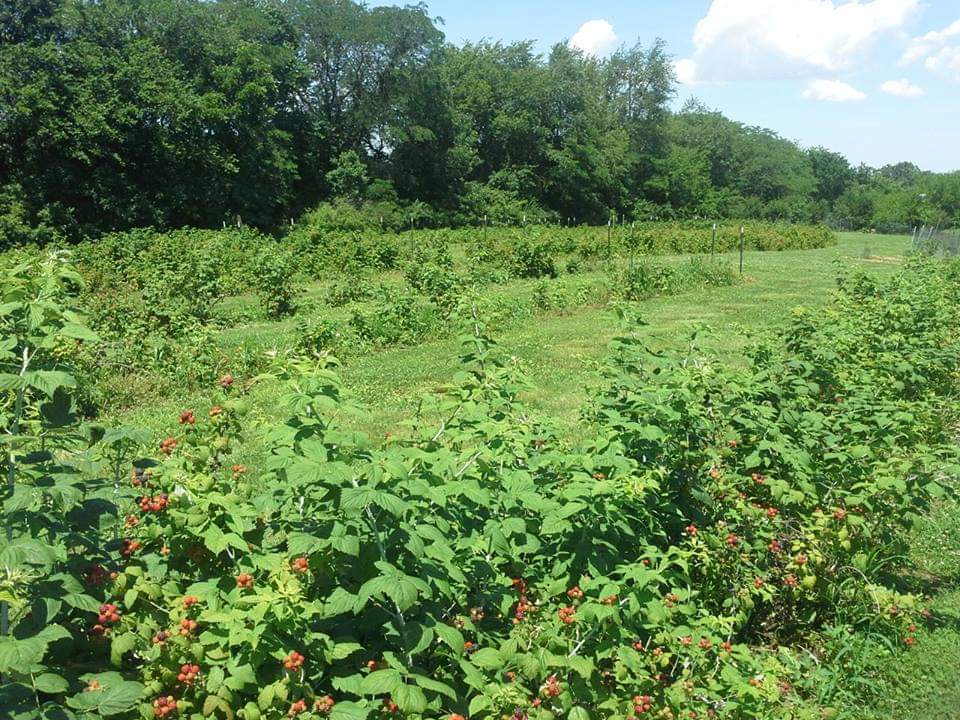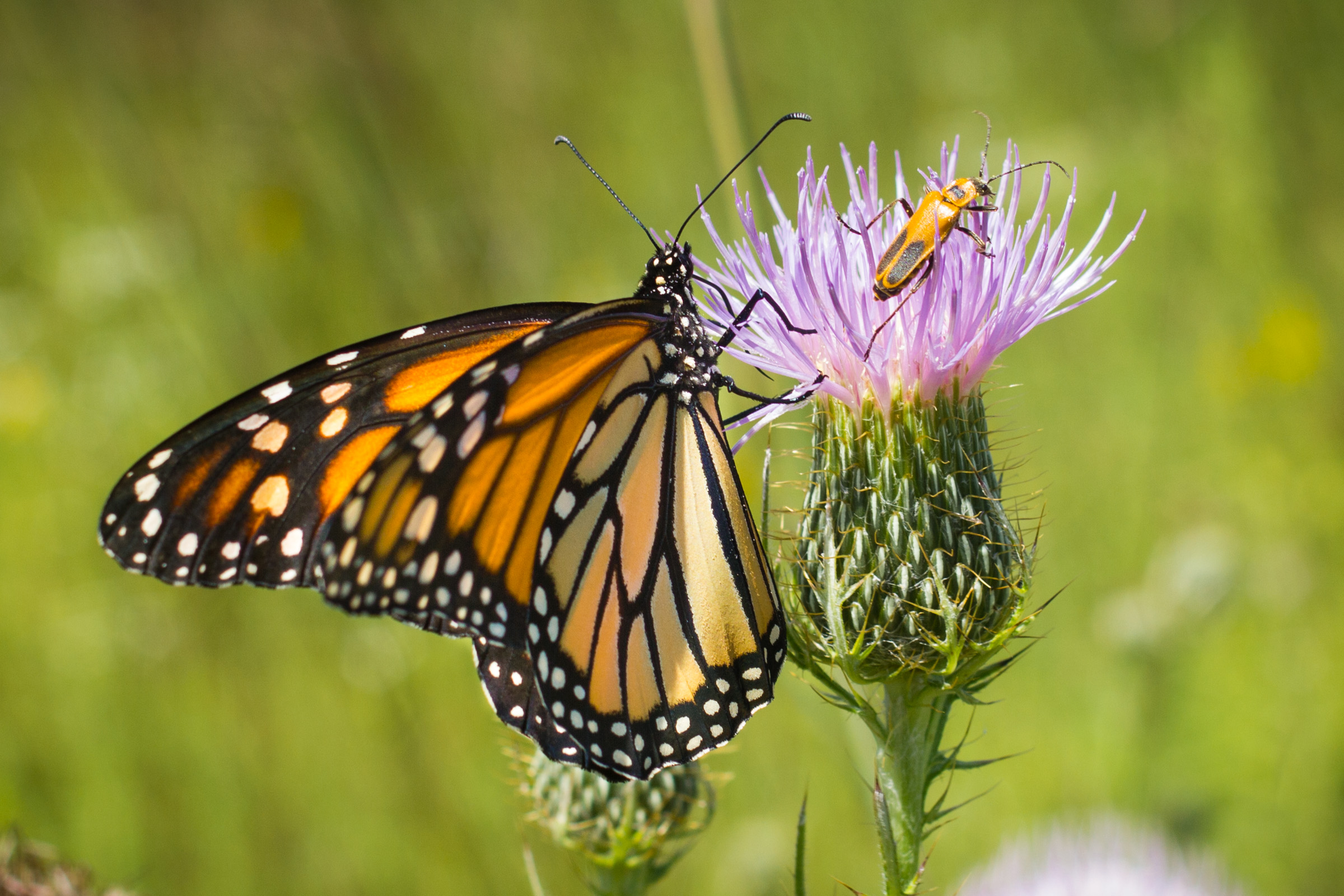Select monthly updates from our team of restoration ecologists, entomologists, plant ecologists, and researchers.
The Xerces Society manages the largest pollinator conservation program in the world. We work with farmers, gardeners, land managers, agency staff, and others to create habitat for bees, butterflies, and beneficial insects—and hundreds of thousands of acres of flower-rich habitat have been planted. We also offer certifications: Bee Better Certification for farmers and food companies who are committed to supporting pollinator conservation in agricultural lands, and Bee City USA and Bee Campus USA certifications for cities and colleges dedicated to making the world safer for pollinators.
With staff based in more than a dozen states, and offering a diverse array of expertise, it can be challenging to summarize the impactful work being done by our team of restoration ecologists, entomologists, plant ecologists, and researchers. Therefore, we have compiled select pollinator conservation program updates into monthly digests. May’s featured staff share stories of building pollinator habitat that will also support monarchs—one project on a farm in Iowa, and the other in a park in Missouri.
Creating Pollinator Habitat at a Local Berry Farm in Iowa
Sarah Nizzi, Farm Bill Pollinator Conservation Planner and NRCS Partner Biologist, Iowa
In northern Warren County, Iowa, south of the Middle River, lies a homestead with 65 acres of timber, agricultural land, a pond, and berries, which has been owned by Richard and Beth McGeough for 35 years. Richard, who goes by Rick, had a long career in the natural resources field, retiring as the Iowa Department of Natural Resources Law Enforcement Bureau Chief. Beth, who spent over 20 years in the banking business, has always loved the outdoors. Now, in their retirement, the McGeoughs spend a great deal of time enjoying their own slice of paradise.
In 2005 Beth was inspired to start growing her own raspberries by a friend who grew and sold vegetables at the Indianola farmers’ market. Beth simply loves raspberries and planted 40 raspberry bushes the first year. She began selling raspberries alongside her friend at the farmers’ market, and discovered that the demand for raspberries was high. In fact, Beth was selling out regularly. The second year, Beth planted an additional 125 raspberries, and by the third year she had over 400 raspberry bushes. In 2008 she started a “u-pick” operation, and Edge of the Woods Raspberry Farm was born.

Beth now grows red and black raspberries, blackberries (her most popular crop), currants, blueberries, pie tart cherries, gooseberries, and rhubarb—all on two acres. There is a red Morton building on-site where Beth’s berry jellies and jams can be purchased, along with other local food items and artwork from the surrounding community.
Providing both an inspiring experience and quality local food is very important to Beth and Rick. Although Edge of the Woods Raspberry Farm is not certified organic—because of the expense involved—Beth goes to great lengths to avoid the use chemicals, including a lot of hand pulling of weeds.
Providing a safe refuge for pollinators, like the monarch butterfly, is also important to the McGeoughs. In fact, in early March, the McGeoughs decided to apply for financial assistance through their local USDA Service Center in Indianola, IA to help convert seven acres of former hay ground into monarch habitat. As Iowa’s Farm Bill Pollinator Conservation Planner and NRCS Partner Biologist, I feel fortunate to be in the position to help with this process.
When asked what made them interested in monarch habitat specifically, Rick explained that through working with the Iowa DNR he and Beth have witnessed lots of species rebound in Iowa over the years, such as the river otter, wild turkey, and white-tailed deer. The McGeoughs would like to see the same happen with the monarch butterfly, and want to do their part to help. In fact, this new diverse habitat will not only help monarch butterflies, but also it will also give refuge to other pollinators and bird species. Conveniently, the land being converted is adjacent to Beth’s crops, which will benefit from insect pollination. The McGeoughs also hope they can bring grassland birds—like bobolinks, meadowlarks, and ring-necked pheasants—back to the farm.
If all goes well, the McGeoughs will be planting their new habitat—with assistance from the Environmental Quality Incentives Program (EQIP)—in the fall of 2019 or spring of 2020. I look forward to assisting the McGeoughs with the planning, implementation, and management of the project. I am thankful each day that I get to do what I do for a living. I feel fortunate to have the opportunity to meet many folks—including Rick and Beth—who have a passion for healthy local food, sustainability, community, and conservation, and to help these individuals and their families make their conservation goals a reality.

Creating Pollinator Habitat at Maramec Spring Park
Stephanie Frischie, Agronomist and Native Plant Materials Specialist
Over the next year, the Xerces Society’s pollinator conservation program will be working with Maramec Spring Park near St. James, Missouri, to manage their land as pollinator habitat. The park’s landscape includes 1,860 acres of forest and fields, as well as the fifth-largest spring in the state.
Maramec Spring Park’s iron deposits were first mined in the mid-1800s. The surrounding area was drastically altered, including with the clearing of timber to fuel the furnaces used to process the ore. Iron operations at the spring ceased with the end of the Civil War, and the company town was abandoned. The trees began to grow back, and wildlife returned to the land.
In 1938, the land was put into the private James Foundation Trust, with the intention that it be managed for the public to enjoy in perpetuity. Today, there are acres of ridges with glade habitats and forest, and hayfields in the low-lying, flat areas of Maramec Spring Park. The spring, the Meramec River, and other seasonal waterways flow through the landscape. An on-site museum and interpretive program teaches about the human history of the site, the karst bedrock system, and the plants and animals of the park. Fishing is a big draw, with a stretch of stream stocked with rainbow trout.

Through the Xerces Society’s pollinator habitat work, the hayfields will be replanted with native wildflowers, prairie grasses, and milkweed plants—all serving to provide rich forage and shelter for wild bees and monarchs, both caterpillars and adults. The project will include a baseline assessment of the habitat and a pollinator conservation plan. Xerces will also put on a workshop about pollinators and habitat management for about 30 natural resource professionals. The park’s interpretive program also plans to include more pollinator habitat workdays and outreach activities.
There is already a lot of great habitat at the park—which James Foundation Trust founder Lucy Wortham James called, “the most beautiful spot in Missouri”—and potential for even more. By actively and intentionally managing the land for plants that support pollinators, we can encourage the same amount of people that come for the trout fishing, to visit Meremac Spring Park to visit to see monarchs fluttering through fields of native wildflowers, or to monitor diverse native bumble bee species.

Additional Resources
Learn more about the Xerces Society’s Pollinator Conservation Program





